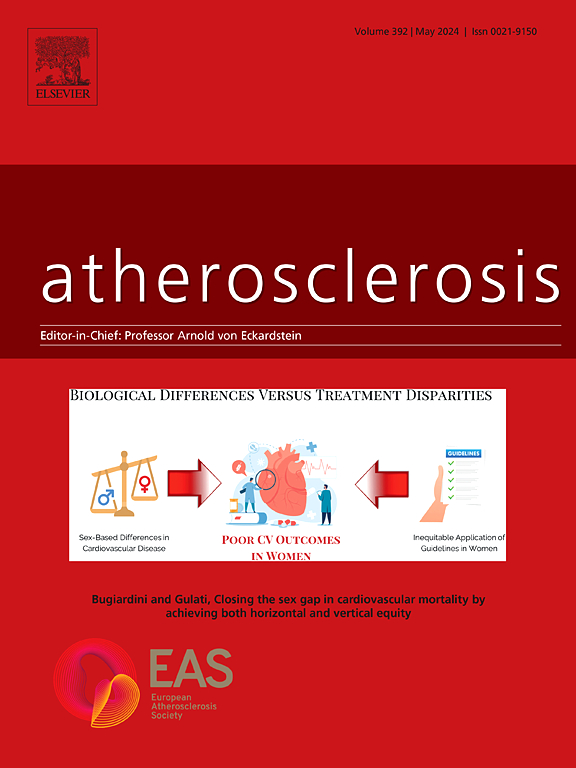Low and high air temperature and cardiovascular risk
IF 5.7
2区 医学
Q1 CARDIAC & CARDIOVASCULAR SYSTEMS
引用次数: 0
Abstract
Temperature extremes are one facet of global warming caused by climate change. They have a broad impact on population health globally. Due to specific individual- and area-level factors, some subgroups of the population are at particular risk.
Observational data has demonstrated that the association between temperature and mortality and cardiovascular mortality is U- or J-shaped. This means that beyond an optimal temperature, both low and high temperatures increase cardiovascular risk. In addition, there is emerging epidemiological data showing that climate change-related temperature fluctuations may be particularly challenging for cardiovascular health.
Biological plausibility for these observations comes from the effect of cold, heat, and temperature fluctuations on risk factors for cardiovascular disease. Shared mechanisms of heat and cold adaptation include sympathetic activation, changes in vascular tone, increased cardiac strain, and inflammatory and prothrombotic stimuli. The confluence of these mechanisms can result in demand ischemia and/or atherosclerotic plaque rupture.
In conclusion, public health and individual-level measures should be taken to protect susceptible populations, such as patients with risk factors and/or pre-existing cardiovascular disease, from the adverse effects of non-optimal temperatures.
This review aims to provide an overview of the association between temperature extremes and cardiovascular disease through the lens of pathophysiology and observational data. It also highlights some specific meteorological aspects, gives insight to the interplay of air temperature and air pollution, touches upon social dimensions of climate change, and tries to give a brief outlook into what to expect from the future.

低温和高温与心血管风险。
极端温度是气候变化引起的全球变暖的一个方面。它们对全球人口健康产生广泛影响。由于特定的个人和地区因素,人口中的某些亚群处于特别危险之中。观测数据表明,温度与死亡率和心血管死亡率之间呈U型或j型关系。这意味着在最佳温度之外,低温和高温都会增加心血管风险。此外,新出现的流行病学数据显示,与气候变化有关的温度波动可能对心血管健康构成特别大的挑战。这些观察结果的生物学合理性来自于冷、热和温度波动对心血管疾病危险因素的影响。热适应和冷适应的共同机制包括交感神经激活、血管张力变化、心脏应变增加以及炎症和血栓前刺激。这些机制的共同作用可导致需求缺血和/或动脉粥样硬化斑块破裂。总之,应采取公共卫生和个人层面的措施,保护易感人群,如具有危险因素和/或已有心血管疾病的患者,免受非最佳温度的不利影响。这篇综述旨在通过病理生理学和观测数据提供极端温度与心血管疾病之间关系的概述。它还强调了一些具体的气象方面,深入了解了气温和空气污染的相互作用,触及了气候变化的社会层面,并试图对未来的预期给出一个简要的展望。
本文章由计算机程序翻译,如有差异,请以英文原文为准。
求助全文
约1分钟内获得全文
求助全文
来源期刊

Atherosclerosis
医学-外周血管病
CiteScore
9.80
自引率
3.80%
发文量
1269
审稿时长
36 days
期刊介绍:
Atherosclerosis has an open access mirror journal Atherosclerosis: X, sharing the same aims and scope, editorial team, submission system and rigorous peer review.
Atherosclerosis brings together, from all sources, papers concerned with investigation on atherosclerosis, its risk factors and clinical manifestations. Atherosclerosis covers basic and translational, clinical and population research approaches to arterial and vascular biology and disease, as well as their risk factors including: disturbances of lipid and lipoprotein metabolism, diabetes and hypertension, thrombosis, and inflammation. The Editors are interested in original or review papers dealing with the pathogenesis, environmental, genetic and epigenetic basis, diagnosis or treatment of atherosclerosis and related diseases as well as their risk factors.
 求助内容:
求助内容: 应助结果提醒方式:
应助结果提醒方式:


